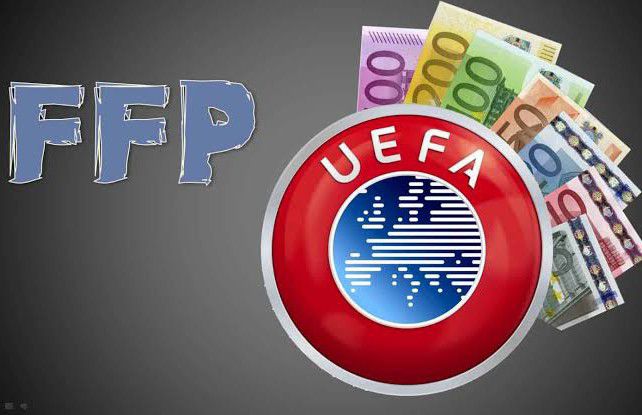
Financial Fair Play (FFP) is a set of regulations introduced by UEFA to create a level playing field in European club football. Established in 2011, FFP aims to prevent clubs from overspending, particularly by limiting how much debt they can accrue in pursuit of success.
This has had a profound effect on the operations and strategies of football clubs across Europe, influencing their financial practices, competitiveness, and overall approach to building successful teams.
Understanding Financial Fair Play (FFP)
FFP was designed primarily to encourage responsible spending in football. Its main tenet is that clubs should not spend more than they earn, thereby preventing them from incurring excessive debt.
Before FFP, several clubs faced financial crises due to overspending, leading to severe consequences, such as insolvency and expulsion from leagues.
FFP aims to curb this by limiting losses to €30 million over three seasons, with specific exceptions for infrastructure, youth development, and women’s football.
Clubs that fail to comply with FFP regulations face sanctions, which can include fines, squad restrictions, and even exclusion from UEFA competitions like the Champions League.
The goal is to protect the long-term financial health of clubs, promote self-sustainability, and reduce the “arms race” in spending that had become prevalent in European football.
The Impact of FFP on Club Football
1. Financial Discipline and Stability
One of FFP’s primary effects has been to instill a sense of financial discipline within clubs. Clubs are now more cautious in their spending, particularly in the transfer market.
For instance, they must be wary of inflating wages or offering massive transfer fees unless backed by solid revenue streams. As a result, clubs are increasingly focusing on sustainable sources of revenue, such as ticket sales, merchandise, sponsorships, and broadcast deals.
Some clubs have adopted a long-term financial strategy, emphasizing academy development to produce young talent rather than making high-profile purchases.
This shift is partly due to the FFP’s impact on limiting the amount clubs can spend relative to their income, which has improved the overall stability of the football economy.
UEFA’s reports indicate that, since FFP’s inception, clubs have seen reductions in debt levels and financial risks, contributing to greater overall health in the industry.
2. Leveling the Playing Field or Benefiting the Rich?
While FFP aimed to create a more level playing field, there is ongoing debate about whether it has instead reinforced the dominance of already wealthy clubs.
Critics argue that FFP effectively preserves the status quo, benefiting clubs with high revenue generation, like Real Madrid, Barcelona, Manchester United, and Bayern Munich.
These clubs have large fan bases, global sponsorships, and higher revenue streams, allowing them to spend more within FFP limits without breaching regulations.
Smaller clubs, on the other hand, are at a disadvantage. Without the same financial resources, they are restricted in their ability to make high-profile signings, even if they have wealthy owners willing to invest.
For example, clubs that rely heavily on broadcast revenue and gate receipts struggle to compete financially with established elite clubs that have robust commercial networks and sponsorships.
3. Investment Strategies and Ownership Models
FFP has also influenced how owners approach club investments. Previously, wealthy individuals or groups could inject large sums into clubs, but with FFP, this approach is restricted.
New owners must now work within the revenue constraints imposed by FFP, leading to a focus on increasing club profitability and self-sufficiency.
This has fostered a trend toward sustainable growth models, where clubs prioritize growing revenues through infrastructure investments, youth academies, and brand-building initiatives.
Clubs like Paris Saint-Germain (PSG) and Manchester City have attracted scrutiny over their financial structures, with critics claiming they exploit loopholes in FFP by inflating sponsorship deals with entities linked to their owners.
These practices have raised questions about FFP’s effectiveness in curbing excessive spending and maintaining true financial fairness in football.
Related: Future Of Football: Impact Of Virtual Reality And Esports On The Game
✓ Top 10 Football Transfers That Changed The Game: A Look At History’s Most Impactful Deals
4. Youth Development and Long-Term Projects
One positive effect of FFP has been the encouragement of youth development. Since clubs cannot easily spend their way to success, many have focused on building robust youth academies and developing talent from within.
This approach is seen in clubs like Ajax and RB Leipzig, which focus on nurturing young players and integrating them into the first team.
By emphasizing youth development, these clubs can generate revenue through player sales while maintaining a competitive team.
Additionally, FFP has prompted clubs to consider long-term projects over short-term spending sprees.
Clubs are now more likely to make strategic, sustainable investments rather than quick fixes, fostering a culture of patience and gradual improvement in their financial strategies.
5. Challenges and Criticisms of FFP
Despite its successes, FFP has faced criticism on several fronts. One key issue is that FFP’s regulations may be difficult to enforce consistently, as clubs with wealthy owners can still find creative ways to boost revenue, such as through inflated sponsorship deals.
Critics argue that such practices undermine the intent of FFP, allowing wealthy clubs to retain a competitive advantage despite the regulations.
Another criticism is that FFP does not account for economic disparities between different leagues.
For instance, English Premier League clubs benefit from lucrative broadcasting deals, giving them an advantage over clubs in less financially prosperous leagues.
Consequently, FFP may reinforce these economic imbalances instead of mitigating them.
6. Recent Adjustments and the Future of FFP
UEFA has acknowledged some of these criticisms and is considering reforms to make FFP more effective.
In recent years, discussions have emerged about revising FFP rules to address modern financial challenges, such as relaxing the spending limits in response to the COVID-19 pandemic.
UEFA is also exploring alternative models, such as the introduction of salary caps or luxury taxes, which could limit excessive spending more directly.
As UEFA seeks to adapt FFP for the future, it faces a difficult balancing act between preserving financial stability and promoting fair competition.
The evolution of FFP will likely continue to shape the financial landscape of European club football in the coming years, influencing how clubs approach both their business and sporting strategies.
Conclusion: Has Financial Fair Play Achieved Its Goals?
Financial Fair Play has had a significant impact on club football, fostering financial stability and encouraging responsible spending.
Clubs have become more disciplined, and there is now greater emphasis on revenue generation, youth development, and sustainable growth.
However, FFP has not been without its challenges. Critics argue that it benefits wealthy clubs, limiting the potential of smaller clubs with ambitious owners.
Ultimately, FFP’s success depends on its ability to adapt to the evolving football landscape.
If UEFA can implement effective reforms that address current criticisms, FFP may achieve its goal of creating a fairer, more competitive European football environment. For now, FFP remains a critical, albeit imperfect, tool in shaping the financial future of European club football.



